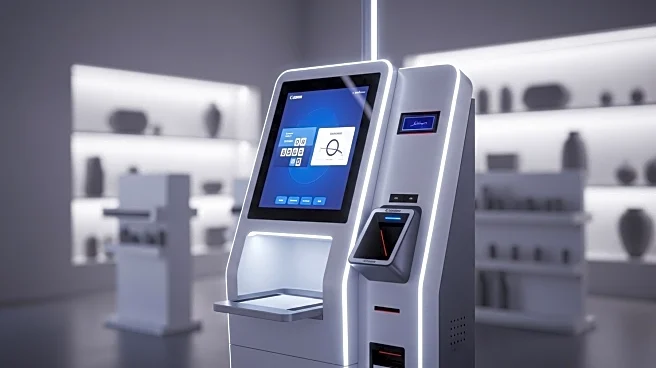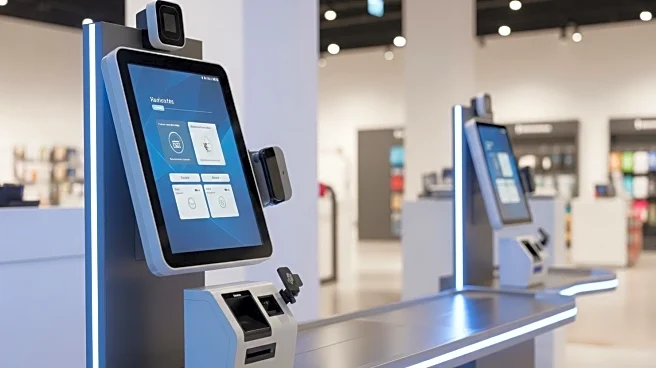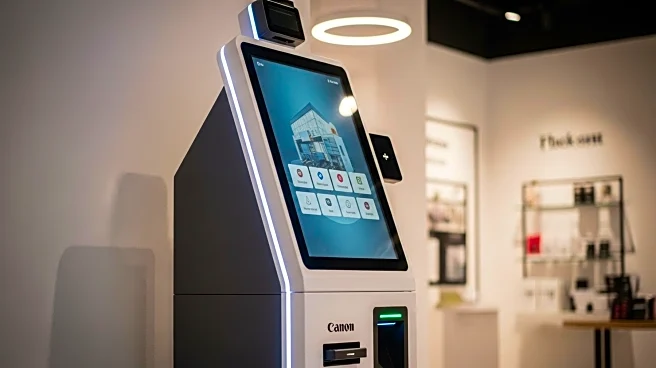What's Happening?
The self-checkout systems market is experiencing significant growth, with a detailed analysis provided in a recent report covering the period from 2025 to 2033. The report highlights the strategies employed by key players in the market, such as Toshiba Tec Corporation, NCR Corporation, and Diebold Nixdorf, among others. These companies are focusing on investment strategies, marketing, and product development to enhance their market position. The market is segmented by components, including hardware, software, and services, as well as by mounting types like stand-alone and wall-mounted systems. The end users of these systems include supermarkets, hypermarkets, and convenience stores. The report also provides a comprehensive regional analysis, identifying North America, Europe, Asia Pacific, Latin America, and the Middle East and Africa as key geographic segments.
Why It's Important?
The expansion of the self-checkout systems market is crucial for the retail industry, as it addresses the growing demand for efficient and contactless shopping experiences. This trend is driven by consumer preferences for faster checkout processes and reduced human interaction, especially in the wake of the COVID-19 pandemic. Retailers adopting these systems can benefit from reduced labor costs and improved customer satisfaction. The market's growth also presents opportunities for technology companies to innovate and offer advanced solutions, potentially leading to increased competition and technological advancements in the sector. Regions leading in market adoption, such as North America and Europe, may see enhanced economic benefits and job creation in the tech and retail sectors.
What's Next?
As the self-checkout systems market continues to grow, companies are likely to focus on enhancing the user experience through technological innovations such as AI and machine learning. These advancements could lead to more intuitive and efficient systems, further driving consumer adoption. Retailers may also explore integrating these systems with other digital solutions, such as mobile apps and loyalty programs, to create a seamless shopping experience. Additionally, regulatory considerations regarding data privacy and security will be crucial as these systems become more widespread. Stakeholders, including retailers, technology providers, and policymakers, will need to collaborate to address these challenges and ensure the sustainable growth of the market.
Beyond the Headlines
The rise of self-checkout systems reflects broader societal shifts towards automation and digitalization. This trend raises ethical and economic questions about the future of work, particularly concerning the displacement of traditional cashier roles. As automation becomes more prevalent, there will be a need for workforce retraining and education to prepare workers for new roles in a digital economy. Furthermore, the increased use of self-checkout systems may influence consumer behavior, potentially leading to changes in shopping habits and expectations. These developments highlight the importance of balancing technological progress with social responsibility.











